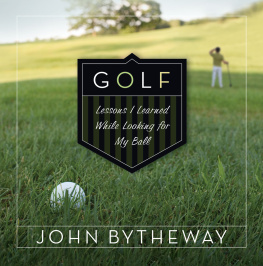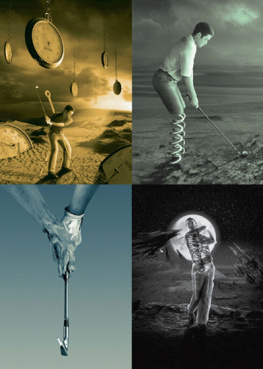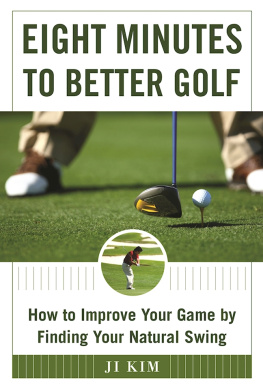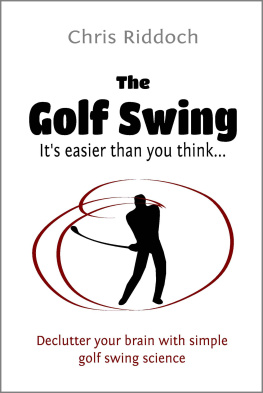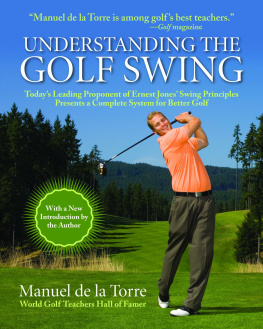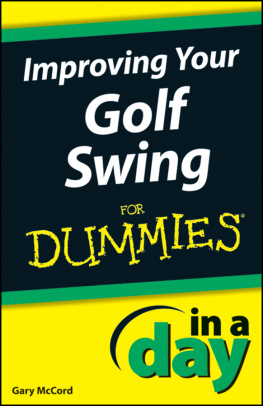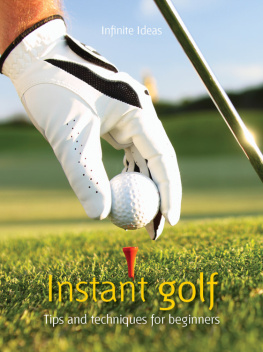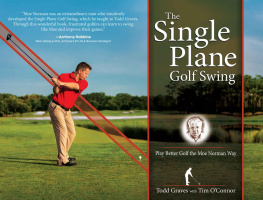Copyright
Copyright 2012 James Lythgoe
No part of this publication may be reproduced, stored in a retrieval system or transmitted, in any form or by any means, without the priorwritten consent of the author or a licence from The Canadian Copyright Licensing Agency
(Access Copyright).
ISBN 978-0-9919243-2-5
GV979.S9L98 2010 796.352'3
C2010-902264-5
In Memory of Al Finnegan
IN MEMORY OF AL FINNEGAN , a veteran of the Second World War, who fought in Normandy on D-Day. Sadly, Al passed away on December 24, 2008.
When asked about D-Day, Al spoke first about the unbelievable noise; then he recalled the young French girl he found in a trench, two miles in from the shore. The troops picked her up and took her to the nearest farmhouse. Al often wondered what became of her.
After watching the television broadcast of the ceremonies commemorating the forty-fifth anniversary of D-Day, Al could not sleep for three or four nights a reminder to us all of the heavy memories war veterans endure. They sacrificed; we benefit. Let us not forget.
Acknowledgements
DOUGLAS CAMPBELL WILLINGLY APPLIED his meticulous command of the English language to my writing. Doug has a special talent for language, and I will be forever grateful to him. Thank you, Doug, you made a contribution to this book I couldnt have made myself.
Working with Suzanne Burkill and Liz Payne was definitely one of the highlights of the experience of producing this book. Suzanne gave very generously of her time as graphic designer, as did Liz in colour-correcting my photographs. Both are highly skilled in their respective fields, and the high quality of their work in this book speaks for itself. Their personal commitment helped me to achieve my goal. I will be forever grateful to Suzanne and Liz for their efforts, and I will never forget the experience of working with them. Thank you both very much.
Lorne Rubenstein of The Globe and Mail gave me advice early on in the project. I didnt exactly follow this advice, but I did pursue my goal to its completion. Thank you, Lorne, for your advice and your encouragement. I believe that, subconsciously, it did help me to complete this book.
Greg N. Dukart granted me permission to shoot the photographs for this book at The Links at Crowbush Cove www.golflinkspei.com . Recognized by Golf Digest as the Best New Course in 1994, The Links at Crowbush Cove is situated around the dunes on the north shore of PEI near Morell, about a thirty-minute drive from Charlottetown. Thank you, Greg, for granting me permission, and thank you to the kind staff of The Links at Crowbush Cove.
John Macleod of Stratford, Prince Edward Island, as is typical of all Islanders, freely offered me his help and hospitality. Thank you, John.
My father and my sister, Dr. Colin Lythgoe and Catherine, respectively, helped in ways only family can. Your early morning help with the photographs is greatly appreciated. Thank you.
A special thanks to Maggie McPhail, Eric Stewart, Linda Jenkins, Kevin Gardiner, and Garry Black for all your kind assistance.
I would like to acknowledge the expert golf instruction to be found in the books I cite: Jack Nicklaus Lesson Tee ; Ben Hogans Five Lessons: The Modern Fundamentals of Golf ; and Paul Runyans The Short Way to Lower Scoring . Thanks also to the late Moe Norman, who demonstrated to us all that the impossible is possible: that you can hit the ball purely and accurately three hundred and sixty-five days a year!
Introduction: Waving at the Golf Ball
BY FAR THE MOST IMPORTANT factor in the achievement of an effective golf swing is the correct use of the hands. Without a conscious awareness of how your hands are operating, you will always feel that your swing lacks something. In my thirty years of golfing, I have never known of anyone giving lessons on the use of the hands. This is why I have written this book.
One morning during the 1987 Qualifying School for the Canadian Tour, I was having my breakfast at the club and noticed Moe Norman, the best ball striker golf has ever seen, sitting at a table next to me. Knowing Moes reputation for being shy with strangers, I resisted the impulse to say hello. Later that day I saw a large gallery gathered on the practice tee, and decided to go over and have a look. Moe was putting on a show for an audience that was in awe of his swing. As he demonstrated his skill, Moe remarked to the gallery that the mistake many golfers make is to wave at the ball. Moe was referring to the hand action of the amateur golfer, and what he said confirmed my observations exactly.
The correct hand action is very deliberate and precise. There is no room for error. This book explains that action in detail, and, since it is impossible to use the correct hand action during the swing unless the shoulders are also moving properly, Chapter 4 provides a short lesson on how to coordinate your shoulders with your hands. My intention is to give golfers the lessons they need in order to eliminate the hand waving that the late Moe Norman and I observed.
When you hit a golf shot, the only link between you and the ball is the club, so you want this link to be as good as it can be. To achieve this, you need proper hand action, and your body needs to move in a manner consistent with your hands. Once you know how to establish these conditions you are on your way to becoming a good golfer. The golf swing is not particularly difficult to develop when you know the hand action, but without it the struggle can last forever.
I know from my own experience how fundamental hand action is to the proper motion of the swing: once I had learned how to use my hands and could coordinate the turn of my shoulders with my hand action, I was able to play New Brunswicks Mactaquac Provincial Park golf course, a course of more than 7,000 yards, from the professional tees and break par.
Many golfers think the grip is the most important element of a good swing. I disagree. There are many golfers who have wonderful grips, but because they use poor hand action they are unable to hit the ball effectively. I have never seen someone with poor hand action produce excellent shots. On the other hand, there have been a few cases of touring professionals who have been able to produce excellent shots in spite of a poor grip , because they knew how to use their hands. A good grip is important, but correct hand action is paramount.
The hand action of the swing is best learned from the . When you know how to grip the club (as discussed in Chapter 1), and address the ball (Chapter 2), you are ready to take the lesson on hand action (Chapter 3). The lesson itself is not difficult to understand or to learn, but it is subtle in its correctness, so it is necessary to pay close attention to the details and move your hands accordingly.
For over thirty years I have been looking for an explicit explanation of the subject, but I have never been able to find one. It simply doesnt exist in the golf literature. This is not to suggest that the literature is inadequate. Many aspects of the golf swing are covered thoroughly, and as a whole the literature provides excellent instruction. This book is simply intended to fill a small but vital gap.
There are a couple of things I would like to point out about the book. First, please note that since I am right-handed, the instructions and photographs provided here assume that you are right-handed too. If you are left-handed, the text and photographs will still be valuable to you just substitute left for all references to right, and vice versa. You will also notice that the text appears to be directed to a male reader I have not used he/she and him/her. I have avoided this because it makes the text confusing and cumbersome. But I am in no way implying that these instructions apply to male golfers only. Female golfers will benefit just as much from these instructions, and I trust they will forgive the stylistic sexism.


